Where Does Tea Come From
Tea is believed to have originated in the region encompassing North Burma and Southwest China. The practice of tea drinking dates back to the Shang dynasty in China, where it was consumed for medicinal purposes. By the Tang dynasty, it became widely popular as a recreational drink.
Discoveries and historical texts suggest that tea plants (Camellia sinensis) were first cultivated in China, with evidence pointing to Yunnan Province as the cradle for these plants. Here, the tea was processed from the leaves of wild trees. As you travel through time, you find that the use of tea later spread to other East Asian countries.
| Country | Spread of Tea Culture |
|---|---|
| China | Originated and cultivated since ancient times |
| India | Introduced by the British in the 19th century |
| Japan | Brought by Buddhist monks in the 9th century |
| Sri Lanka | Started by the British in the 19th century |
Tea comes in various types, primarily distinguished by the processing method:
Bestsellers
- Green tea: Unoxidized leaves, maintaining a green color.
- Black tea: Fully oxidized leaves, offering a darker color.
- Oolong tea: Partially oxidized, combining qualities of green and black tea.
- White tea: Made from young leaves and buds, minimally processed.
Your cup of tea retains a rich history, reflective of the culture and the specific methods through which the leaves have been harvested, processed, and brewed. Exploring the differences in tea types underscores the diversity of cultures and tastes developed over centuries.
Types of Tea
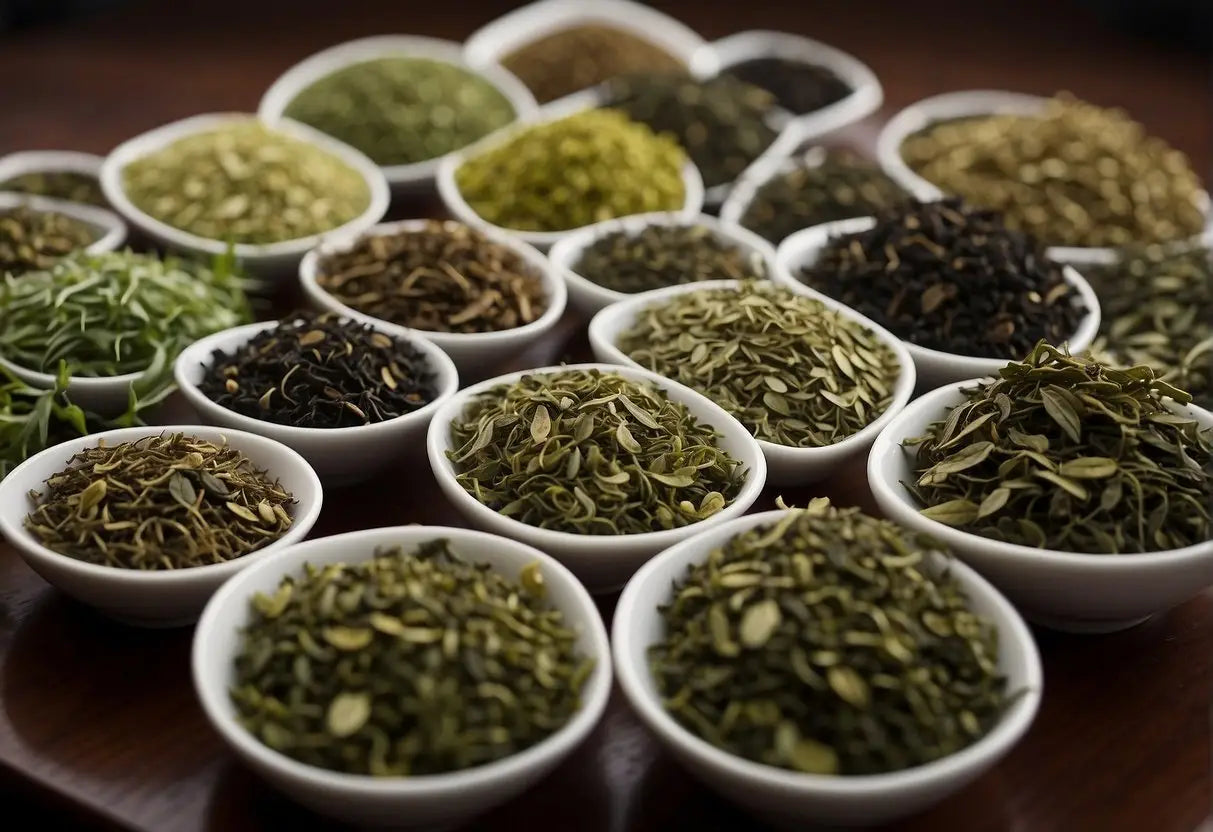
Tea is an incredibly diverse beverage, originating from the Camellia sinensis plant. Your choice of tea can range from the delicate and subtle to the robust and full-bodied. Each type differs in processing and flavor profile.
Green Tea
Green tea is characterized by its minimal oxidation process. You can recognize it by its fresh, grassy flavor and greenish leaf color. Typically, the leaves are swiftly heated after picking to prevent oxidation, which maintains their natural color and delicate taste.
Notable Varieties:
- Sencha: Often from Japan, with a bright, vegetal taste.
- Longjing: Also known as Dragon Well, a pan-fired Chinese green tea with a distinct chestnut flavor.
Black Tea
Black tea undergoes full oxidation, giving it a darker leaf color and richer flavor compared to other tea types. You'll notice its boldness in both aroma and taste, which is why it's frequently enjoyed with milk.
Examples:
- Assam: A strong tea from India with a malty flavor.
- Earl Grey: Black tea with distinctive citrus notes from bergamot oil.
Oolong Tea
Oolong tea is partially oxidized, placing it somewhere between green and black tea in terms of color and flavor. Your experience with oolong can vary widely, from light and floral to dark and toasty, depending on the level of oxidation and the region of origin.
Popular Types:
- Tieguanyin: From China, known for its aromatic, orchid-like flavor.
- Wuyi: A darker, richer type with a mineral complexity.
White Tea
White tea is the least processed of all teas. It retains a high degree of its natural antioxidants, and you'll recognize it by its delicate and slightly sweet flavor. The leaves are typically picked when they are young, giving them a fine white fuzz that contributes to the name.
Common Varieties:
- Bai Hao Yin Zhen: Also known as Silver Needle, it's prized for its subtlety and elegance.
- Bai Mu Dan: Known as White Peony, it's a blend of leaves and unopened buds.
Puer Tea
Puer, or Pu-erh, is a fermented tea that can age over time, much like wine. The result is a complex earthy flavor that deepens with age. Puer tea comes in two types: raw (Sheng) and ripe (Shou).
Lao Ban Zhang
Distinctive Features:
- Sheng Puer: A green type that gradually ferments and matures over time.
- Shou Puer: Quick-fermented to mimic the taste of aged Sheng Puer.
Tea Cultivation
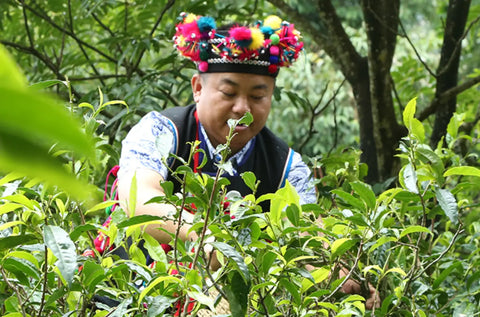
Tea cultivation requires specific environmental conditions and meticulous harvesting practices to ensure the quality of the tea leaves.
Plantation Climate
Tea plants thrive in a distinct set of climatic conditions, typically found in tropical and subtropical regions. Your plantation must have:
- Altitude: Between 600 to 2,500 meters above sea level.
- Temperature: A range of 20-30°C, with no frost.
- Rainfall: About 1,200 to 2,500 millimeters annually, well-distributed throughout the year.
- Soil: Acidic and well-drained, with a pH typically between 4.5 and 6.5.
Harvesting Methods
The harvesting of tea is crucial, requiring precision to maintain the integrity of the leaves.
- Manual Picking: The traditional and most precise method. You pluck only the top two leaves and the bud using your fingertips.
- Mechanical Harvesting: Deployed in larger estates for efficiency, though it may not match the selectivity of hand picking.
Global Distribution
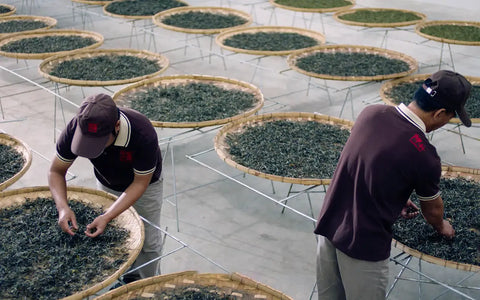
Your understanding of tea's origin spans across various countries, each playing a significant role in its production and distribution.
Top Producing Countries
- China: Notably the world's largest producer, with a significant portion of the global tea output, specifically renowned for green tea.
- India: Second to China, India is prominent for its Assam and Darjeeling varieties.
- Kenya: Leads the African continent in tea production, mainly producing black tea for the global market.
- Sri Lanka: Known for Ceylon tea, Sri Lanka's production heavily influences the global tea economy.
Export and Trade
- China and India are significant exporters, with China leading in green tea exports and India in black tea.
- Kenya excels in the export of tea due to its focus on large-scale commercial farming, with the UK as one of its main importers.
- Global tea trade also involves countries like Sri Lanka and Vietnam, with Russia, the United States, and the UK being among the top importers.
Processing Techniques
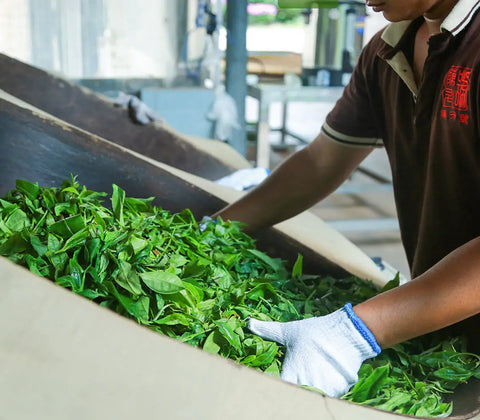
Tea processing is a methodical series of steps that transforms fresh tea leaves into the dried leaves used for brewing. Each type of tea, be it black, green, oolong, or white, follows a specific sequence of processes that substantially impacts its flavor, aroma, and color.
Withering
Withering involves laying out the tea leaves in a cool, dry place for several hours to reduce moisture content. Your goal during this phase is to prepare the leaves for rolling by making them pliable.
- Time: Typically 12 to 18 hours
- Moisture Reduction: Around 30% to 50%
Rolling
Rolling serves to break down the structures of the tea leaves, initiating the release of natural oils and enzymes. It also shapes the leaves into their final form.
- Methods: Hand-rolled or machine-rolled
- Effect on Leaves: Twisting or curling, depending on method
Oxidizing
Oxidation, often inaccurately referred to as 'fermentation,' is the stage where enzymes within the tea leaves react with oxygen. This process develops the tea’s complexity, color, and taste.
- Controlled Factors: Temperature, humidity, and duration
- Color Change: Green leaves turn to a coppery hue
Firing
Firing halts the oxidation process by applying heat to the tea leaves. This step also reduces the final moisture content, stabilizing the tea for storage and sale.
- Heat Sources: Sun drying, pan firing, or oven drying
- End Result: Moisture is reduced to 2% – 3%, enhancing shelf life
Cultural Significance
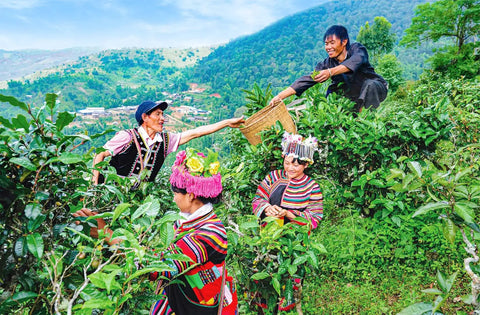
Tea is not just a beverage but a deeply ingrained social and cultural institution in many societies. Your understanding of its cultural significance can be enhanced by exploring its role in ceremonies and social interactions.
Tea Ceremonies
Across the globe, tea ceremonies hold cultural importance. In Japan, Sado or the Way of Tea, is a meticulously choreographed ritual symbolizing harmony and respect. This ceremony involves the preparation and presentation of matcha, a powdered green tea. The Chinese tea ceremony, Gongfu Cha, focuses on the art of tea preparation. Practices vary by region, emphasizing the tea's aroma, flavor, and aesthetic presentation.
Social Aspects
Tea plays a pivotal role in social gatherings. In Britain, the tradition of afternoon tea, dating back to the 1840s, is a social event where people converse over tea served with sandwiches and cakes. Similarly, in Morocco, serving mint tea to guests is a sign of hospitality and is often performed with great ceremony. Tea houses or chasitsu in Japan provide a communal space often associated with intellectual discussions and social bonding.
Health Benefits
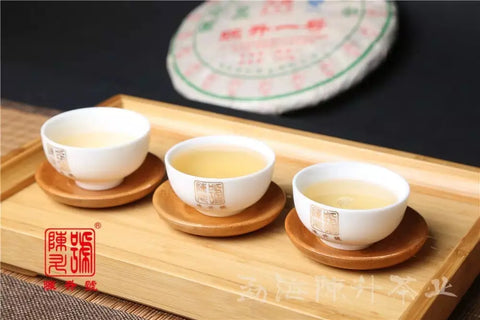
Tea, a beverage beloved around the world, can play a role in your well-being. Here are some of the health advantages you may enjoy:
-
Antioxidants: You'll find that tea is rich in these protective compounds which help to prevent damage from free radicals in your body.
-
Heart Health: Drinking tea might be associated with a lower risk of heart-related issues, due to the flavonoids that assist in improving the health of your blood vessels and heart.
Types and Benefits:
| Tea Type | Notable Health Benefit |
|---|---|
| Green Tea | May improve brain function and fat loss. |
| Black Tea | Potential for lowering LDL cholesterol levels. |
| Herbal Tea | Can have various benefits depending on the herb (e.g., chamomile for sleep, peppermint for digestion). |
Regular Consumption:
When you consume tea regularly, it could contribute to:
- Improved Mental Alertness: Components like caffeine can enhance your brain function.
- Digestive Health: Certain herbal teas offer relief from digestive discomfort.
Note: Your individual health conditions and dietary needs might affect how tea influences your health. Moderate consumption is key, and it's wise to consult with a healthcare professional about how tea can fit into your diet.
Remember, while tea has several potential health benefits, its effects can vary, and it should not be relied upon as a cure or sole treatment for medical conditions.
Tea Varietals and Blends
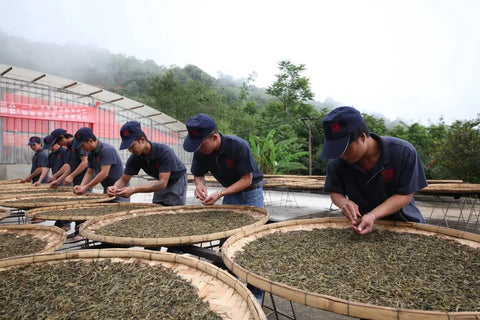
When you explore the world of tea, you come across an array of varietals and blends. Essentially, all teas stem from the plant species Camellia sinensis, but different processing methods give rise to the six main types:
- White Tea: Minimally processed, it has delicate flavors and a light color.
- Green Tea: Not oxidized, it retains a green color and has a fresh, grassy flavor.
- Oolong Tea: Partially oxidized, offering a diverse spectrum of flavors.
- Black Tea: Fully oxidized, characterized by robust and bold flavors.
- Pu-erh Tea: Aged and fermented, known for its earthy taste.
- Yellow Tea: Similar to green tea but with a slower drying phase, resulting in a milder flavor.
Each varietal can further be divided based on the region of cultivation and the specific cultivar of the tea plant. For example:
| Region | Notable Varietals |
|---|---|
| Darjeeling | Darjeeling White, Black |
| Assam | Assam Black |
| Fujian | Tieguanyin (Oolong) |
| Yunnan | Pu-erh |
Blends, on the other hand, are combinations of different varietals or tea mixed with other ingredients like herbs, spices, and flowers to create unique flavors. Renowned blends you might be familiar with include:
- Earl Grey: Black tea with bergamot oil.
- Chai: Black tea with spices like cardamom, cinnamon, and ginger.
- English Breakfast: A robust blend of various black teas.
Understanding these varietals and blends allows you to better appreciate the diversity and complexity of tea flavors. Whether you prefer a straightforward varietal or a sophisticated blend, there's a tea out there to match your palate.
Packaging and Storage
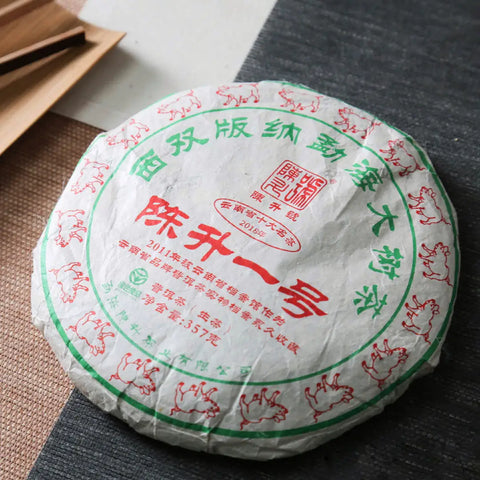
When your tea is processed and ready for distribution, careful packaging is paramount to preserve its flavor, aroma, and quality. Manufacturers often use a variety of materials for packaging:
- Foil-lined bags: These are airtight and protect tea from moisture and odors.
- Tin-tie bags: These are convenient for resealing, helping to maintain freshness.
- Tins or canisters: Often made of metal or ceramic, they offer excellent protection from light and air.
Considerations for Storing Tea:
Light and Air: For optimal freshness, store your tea in a cool, dark place away from sunlight. Exposure to light and air can degrade the quality of tea over time.
Moisture: Ensure that your tea is kept in an airtight container to avoid moisture, which can lead to mold growth and loss of flavor.
Temperature: Avoid storing your tea in areas with fluctuating temperatures. Consistent, moderate temperatures are ideal.
Odors: Tea can absorb odors, so it's best to store it away from spices, coffee, or any other strong-smelling substances.
Shelf Life and Expiry:
- Green and white teas: These have a shorter shelf life, usually up to a year.
- Oolong, black, and herbal teas: These can often maintain their quality for up to two years.
Remember, proper packaging and storage are essential to enjoy the full sensory experience of your tea.
Brewing Methods
When you're ready to brew tea, the variety of methods available can influence the flavor and strength of your tea. Selecting the appropriate brewing method is essential to enjoy the full range of flavors the tea leaves have to offer.
Infusion:
- Western Style: Use one teaspoon of loose leaves per cup. Steep for 2 to 5 minutes in boiling water.
- Asian Style: Often involves multiple short infusions using a greater leaf-to-water ratio with a Yixing teapot or a Gaiwan.
| Method | Tool | Temperature | Time |
|---|---|---|---|
| Western | Teapot or infuser | Near boiling | 2-5 minutes |
| Asian | Yixing/Gaiwan | Varied | Multiple short infusions |
Decoction: For some teas, such as Chai or certain herbal tisanes, decoction is a better method. This involves simmering the tea leaves or ingredients directly in water on the stove for a period of time, usually between 10 and 30 minutes.
Cold Brew:
- Place tea in a pitcher with cold water.
- Refrigerate for 4-8 hours or overnight for a smoother taste.
Remember to use fresh, filtered water whenever possible for the best tasting tea. The temperature of the water and brewing time are important factors that can change the flavor of your tea. Experiment with these parameters to find your ideal cup.
Frequently Asked Questions
In this section, you will find specific information on the origins, production, and types of tea, along with the impact of geography on its cultivation.
What is the historical origin of tea?
The historical origin of tea traces back to ancient China, where it was discovered as a beverage over 5,000 years ago. Legends attribute its discovery to Emperor Shen Nong, who is said to have found tea's pleasing flavor when wild leaves drifted into a pot of boiling water.
Which countries are the largest producers of tea?
The largest producers of tea globally are China, India, Kenya, and Sri Lanka. These countries have extensive tea-growing regions with the necessary climate, soil, and expertise to cultivate vast quantities of tea leaves.
Can tea be sourced from different types of plants?
Tea is primarily sourced from the Camellia sinensis plant. However, there are two main varieties: Camellia sinensis var. sinensis and Camellia sinensis var. assamica, which are used to produce different kinds of teas, including green, black, white, and oolong tea.
When was tea first introduced to Europe?
Tea was first introduced to Europe in the 16th century, with the Dutch and the Portuguese being among the first to trade it. It became particularly popular in Britain during the 17th century and has remained a staple beverage since then.
How does the geography of a region affect tea production?
The geography of a region, including its climate, altitude, and soil, plays a crucial role in tea production. Specific conditions such as high altitude, abundant rainfall, and stable temperatures can produce higher quality tea leaves with distinct flavors.
What distinguishes black tea from other types of tea?
Black tea is distinct from other types of tea due to its full oxidation process which gives it a darker color and stronger flavor. Unlike green or white teas, which are less oxidized, black tea offers a bold, robust taste and typically has a higher caffeine content.
← Older post Newer post →











